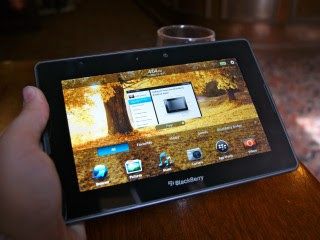
T-Mobile today introduced Bobsled™ by T-Mobile, a new brand aimed at bridging traditional telecommunications and Internet-based voice and data services to enable people to stay connected in a simple and cost-effective way. The first product available under the new Bobsled by T-Mobile brand is the Bobsled application for Facebook, which provides Facebook’s more than 500 million users worldwide with free, one-touch calling to their Facebook friends from a personal computer and through the social platform’s chat window.
In addition to making live voice calls across the globe, users will also be able to send voice messages to their friends either privately or via their “walls.” The Bobsled application for Facebook is available today as a free download for all Facebook users and is not exclusive to T-Mobile customers. This captures a unique opportunity for the brand, as a recent survey found that 88 percent of Facebook users surveyed want voice chat capabilities within the site.
“T-Mobile’s focus is to innovate to provide simple and affordable communications for customers, enabling people to stay connected wherever they are,” said Brad Duea, senior vice president, T-Mobile USA. “Bobsled by T-Mobile takes our communications services innovation to a whole new dimension, bringing simple and cost-effective connections to more than half a billion people overnight, allowing people on Facebook to more easily connect and giving voice to social networking. Our new Bobsled brand will evolve in the coming months to provide even more ways for people to connect, no matter what platform, device or mobile provider they are using.”
Once downloaded, customers can use the Bobsled application for Facebook to place voice calls to their friends through Facebook Chat with just one click. This is one of the first voice over Internet protocol (VoIP) applications seamlessly integrated into Facebook Chat, which makes it quick and simple to place an impromptu call to a Facebook friend. The application eliminates the need for dialing — users simply click on a friend’s name to start the conversation. There’s also no need to remember screen names or to input numbers. With the new application, customers also can leave a voice message for friends when they’re not available. Anyone on Facebook can receive a call; no application download is required to receive a call via the Bobsled application for Facebook.
As the way people communicate transcends networks and devices, Bobsled by T-Mobile positions T-Mobile as a provider of cloud-based communications services over the Internet. In addition to providing Facebook users with one-touch calling, Bobsled by T-Mobile also powers the Group Text™ and Cloud Text™ applications on the new T-Mobile® Sidekick® 4G™. Bobsled Group Text lets customers create, name, manage and participate in reply-all group text conversations, enabling them to lead their network in conversation and social planning. Bobsled Cloud Text provides the option to text with friends or groups across platforms, whether from the comfort of their PC’s large screen and keyboard, or from their new Sidekick 4G.
In the near future, T-Mobile plans to evolve Bobsled by T-Mobile to include video chat, to create the ability to place VoIP calls to mobile and landline U.S. numbers and to offer applications on smartphones and tablets across various mobile platforms, regardless of the carrier that powers such devices.
The Facebook application for Bobsled by T-Mobile is powered by Vivox, Inc., the No. 1 integrated voice platform for the Social Web, offering high quality, best-in-class voice capabilities for clear and crisp calls.


















 also managed to strike a deal with a carrier.
also managed to strike a deal with a carrier. 

 Hz snapdragon CPU. Although these are not dual-core devices, it is certainly enough to make multimedia and applications run speedily on the modestly-sized display. Internal RAM is 512MB, which is a lot more than in the previous version. The Mini and Minipro are HSPA capable devices with WiFi, they also come with a pretty large 1200 mAh battery which is quoted as giving a theoretical maximum of about 4 to 5 hours talktime and 14 days standby on 3G. Bluetooth and USB connectivity are supported.
Hz snapdragon CPU. Although these are not dual-core devices, it is certainly enough to make multimedia and applications run speedily on the modestly-sized display. Internal RAM is 512MB, which is a lot more than in the previous version. The Mini and Minipro are HSPA capable devices with WiFi, they also come with a pretty large 1200 mAh battery which is quoted as giving a theoretical maximum of about 4 to 5 hours talktime and 14 days standby on 3G. Bluetooth and USB connectivity are supported.




